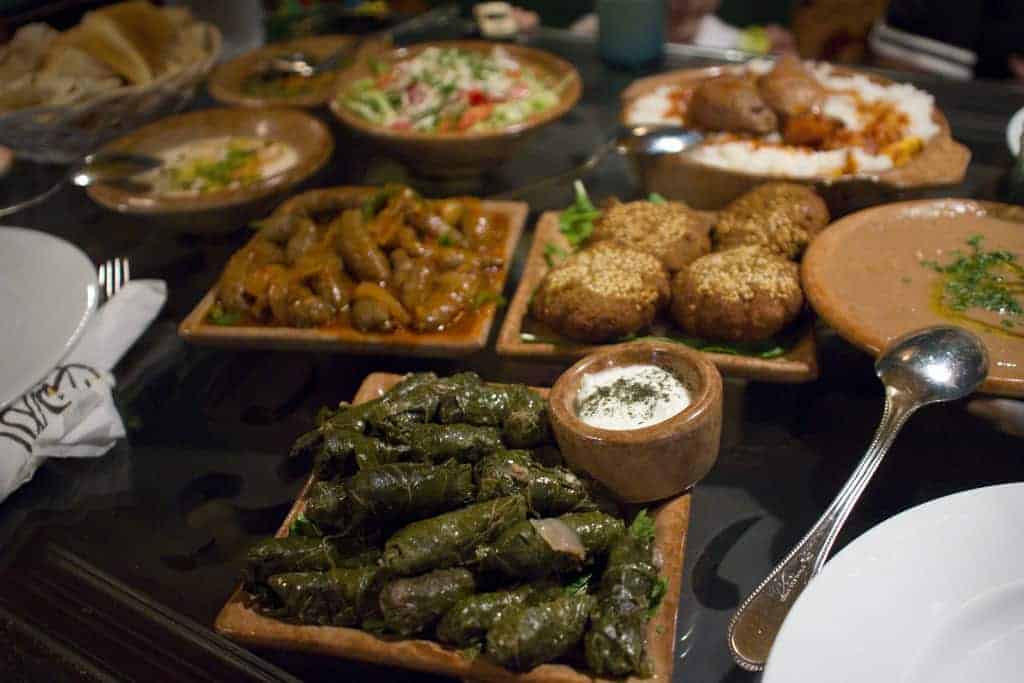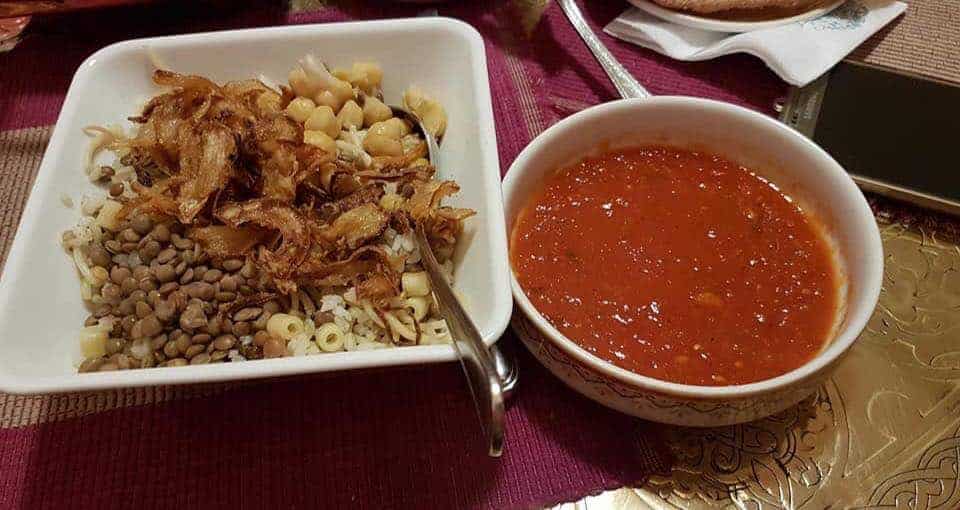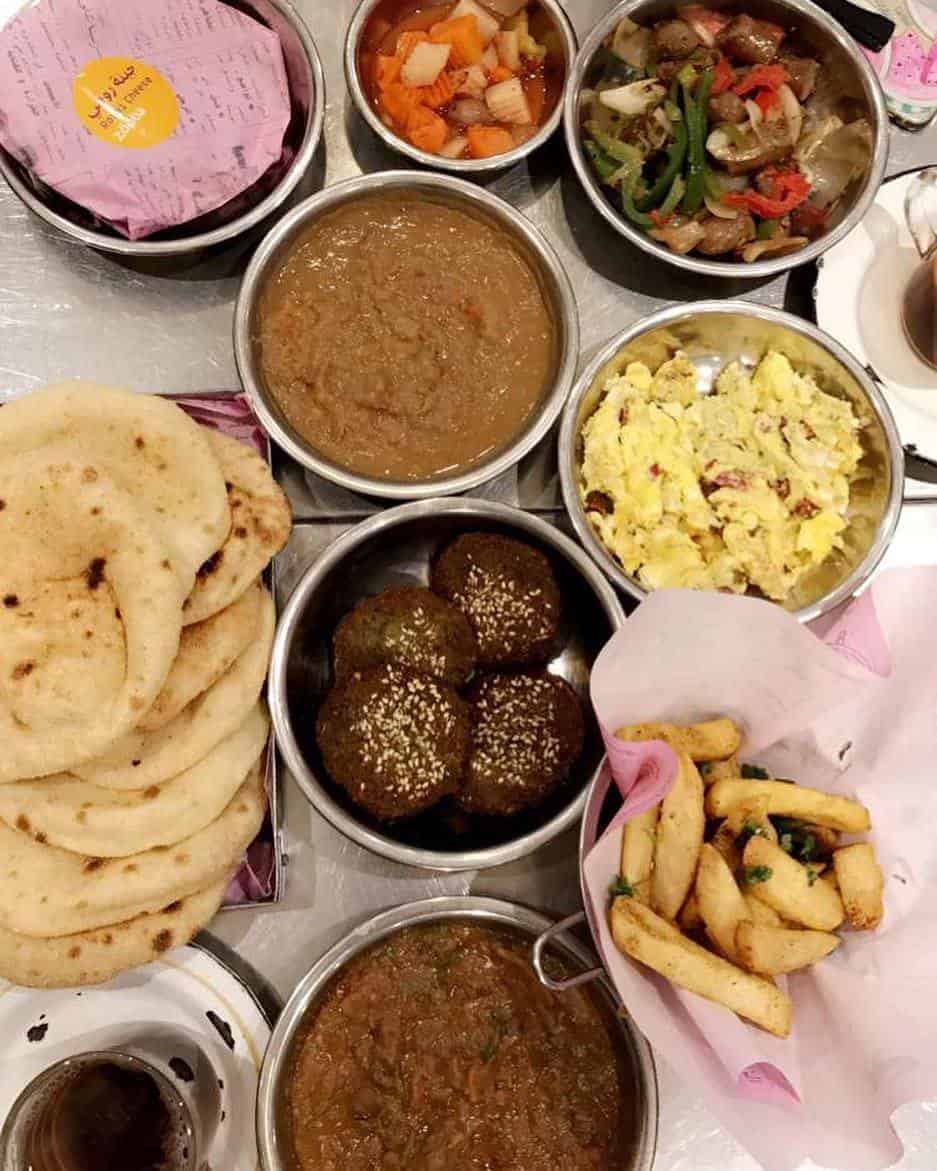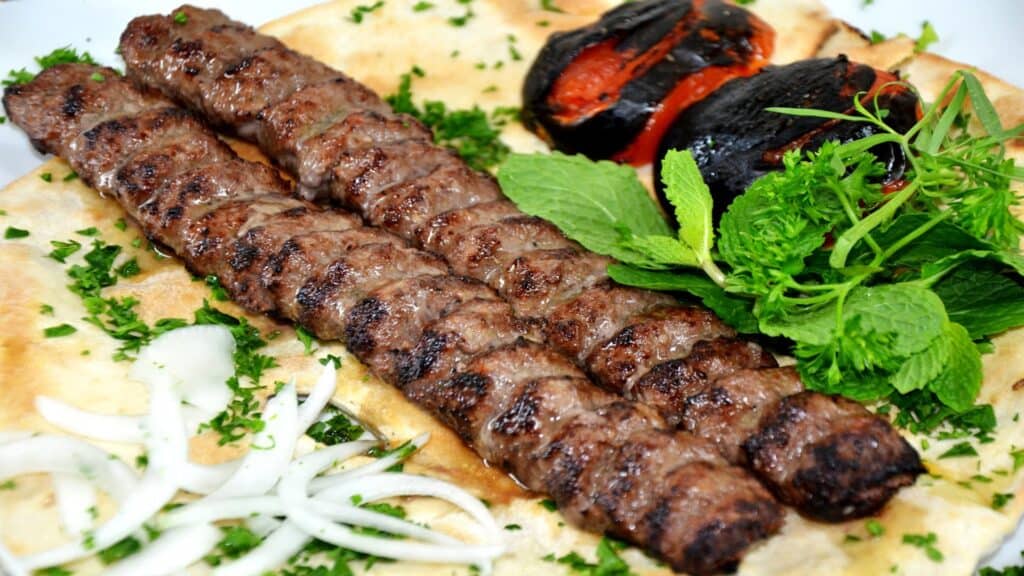When you’re traveling through Egypt, it’s not uncommon to be caught up in the beauty and wonders of this magnificent country, hence forgetting that the food culture is indeed unique and worth exploring. As far as what to expect, many of the country’s traditional dishes include lamb, beef and fish, and myriad recipes focus on rice and grains, as well as beans and vegetables. Thus, even if you’re a vegetarian, you’ll have plenty of delicious food to eat in Egypt.

Knowing where and what to eat when traveling anywhere is always a challenge, Egypt included. But bear in mind, the very best Egypt tours should feature stops at some of the country’s most authentic eateries, so check before booking. You’ll want to see, touch and taste the foods that Egypt is known for, and an experienced guide can steer you to the best local spots. Take your appetite and curiosity on your trip and be sure to sample and savor these eight tempting foods in Egypt.
Aish Baladi
Beware carbohydrate addicts, one of the Egyptian diet’s staples is bread. Aish Baladi is a fluffy pita-type bread crafted from 100 percent whole grains such as emmer wheat and barley. You’ll find this doughy delight all over the country, and each bite is fresher than the last because it’s baked several times daily. Aish baladi can replace utensils, so don’t be surprised when you notice Egyptians eating with their hands. They commonly sop up every morsel of food on the plate with a chunk of warm pita. You’ll soon find yourself doing the same. While bread is essential in Egyptian fare and included in many recipes, it’s only a prelude to what Egypt offers in terms of cuisine.

Koshary
A go-to street food, koshary (also kushari or koshari) is regularly deemed the national dish of Egypt. This hearty hodge-podge of lentils, chickpeas, rice, macaroni, tomato sauce and fried onions sates even the most voracious appetites. While the roots of this recipe are fuzzy, it’s possible that koshary is derived from mujadarra (it’s a similar dish but does not contain pasta). Though koshary is frequently seen on tables in Arab homes around the world, it’s been a favored street food in Cairo for decades. Today, Koshary Abou Tarek – thought of as one of the best restaurants in Cairo – is the famed spot to indulge in this dish. A heaping portion shouldn’t cost much more than a dollar or two, promising plenty of energy for an afternoon of sightseeing.

Fatteh
This ancient Arab dish is often eaten during celebrations and feasts such as Ramadan, weddings, and baby births. Fatteh or fattah uses fresh or toasted flatbread or pita cut into wedges as the foundation, and then it’s layered with meat (usually beef or lamb and sometimes chicken), rice, onion, garlic, spices, yogurt, zesty tomato sauce, and on occasion, eggplant or aubergine. Fatteh is finished with a speckle of pine nuts for texture, and once complete and presented on a platter, it looks similar to nachos due to its medley of colors, with the pita wedges replacing tortilla chips.
Ta’ameya
Falafel is typically thought of as a Middle Eastern food (the fight about the country where it originated continues), but Egypt has its own version using dried fava beans rather than dried chickpeas. A medley of fresh herbs – parsley, dill and cilantro, along with onion, garlic, ground cumin and coriander – round out the ingredients list. Fava bean balls can be rolled in sesame seeds after frying. Pita bread (of course) makes for a perfect accompaniment as does tahini. Ta’ameya may be plated alongside a tomato and cucumber salad.

Ful Mudammas
Legend has it that this ancient Egyptian dish is as old as the Pharaohs. Ful Mudammas is a classic breakfast dish and popular street food in Egypt that’s eaten at any time of day. It also starts with a fava bean base. Beans are soaked overnight, cooked, then served in a bowl and sprinkled with chopped parsley. Hard-boiled eggs are usually added (perfect for breakfast), and pita bread (again) is a necessary accouterment. Dressing, consisting of olive oil, salt and pepper, pepper flakes, lemons, crushed garlic, and ground cumin, is drizzled on ful mudammas as desired.
Fish Sayadiya
Seafood fans won’t want to miss the chance to eat one of Egypt’s prized fish dishes. Chefs clean a whole white fish, season it with salt, pepper and spices, then pan-fry before finishing the fish in the oven with a sauce created from onion, bell pepper and tomato. Served over rice, fish sayadiya is sometimes garnished with toasted almonds, which add a nice crunch to this oh-so flavorful dish.

Kabab wa kofta
No Egyptian food list would be complete without kofta! This filling meat-based dish is sometimes called the meatloaf of Egypt. It’s mainly lamb, beef, onion, garlic and spices (kaba wa kofta can be on the spicy side) and fresh mint. It’s basically ground meat formed into balls or chunky oblong shapes and cooked on skewers. Kofta can also be cooked directly on the grill sans skewers. It usually pairs well with salad, and, you guessed it, that irresistible Egyptian bread.

Om Ali
This traditional and decadent bread pudding originated in Egypt but is a ubiquitous dessert in other regions of the Middle East. Folklore claims that this dish dates back to the 13th century and is named after Sultan Ezz Din Aybak’s wife. There are several tales as to why the dessert took her name, some of which are dark and distressing, so we’ll skip that (we don’t want to take anything away from this fabulous dessert!). Om Ali – also Omali, Umm Ali, and Oumm Ali – translates to “Ali’s mother.”

It is most often made from pieces of phyllo dough or puff pastry, blended with ingredients like almonds, raisins, pistachios, coconut, milk and cream, then sprinkled with cinnamon and baked in the oven until golden brown. The richness of the heavy cream and lightness of the phyllo or pastry create a sugary bowl of goodness that eaters claim is well worth the carbs, fat and calories. Spoil yourself with some of the tastiest Om Ali at Abou Shakra in Garden City, close to the Four Seasons at Nile Plaza, one of the best hotels in Cairo.
